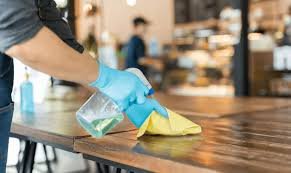Every restaurant has two non-negotiables: the food has to be good, and the place has to be clean. A single slip on either front can drive customers away faster than you think. Cleanliness isn’t just about wiping tables or mopping floors; it’s about building trust, protecting your reputation, and managing costs in ways that aren’t always obvious at first glance. When cleaning becomes a real part of the business strategy, restaurants discover it saves money and keeps guests returning for more meals. Let’s explore the areas where thoughtful cleaning practices make a measurable difference.
Hire Professional Cleaners for End of Day Care
It’s tempting for restaurant owners to stretch their payroll by asking staff to scrub down the kitchen after the dinner rush. On the surface, this looks like a cost-saving measure. But in practice, it often costs more. Tired staff clean quickly rather than thoroughly, which means buildup goes unnoticed until it becomes a bigger problem. Grease hardens, food particles attract pests, and surfaces aren’t properly sanitized. This is where professional cleaning makes sense.
Many modern restaurateurs are recognizing the value of commercial cleaning for their kitchens and eating spaces. A crew trained in food-safe cleaning methods knows how to handle grease traps, disinfect equipment, and keep ventilation systems clear. They’re faster, more efficient, and they prevent health code violations that can shut a business down. When professionals handle end-of-day cleaning, your staff can focus on what they’re paid to do best: cook, serve, and create a memorable dining experience.
Stay on Top of Fryers and Fresh Cooking Oil
Customers may not notice spotless baseboards, but they’ll absolutely notice when fried food tastes off. Fryers are at the heart of many menus, and they need constant attention. Dirty fryers don’t just change flavor; they reduce oil life and force owners to spend more on replacements. Neglecting fryer maintenance also creates a fire hazard and raises energy costs because the machines have to work harder when coated in buildup.
The smartest operators are turning to cooking oil management systems to take the guesswork out of this task. These systems make it easy to filter, monitor, and replace oil on schedule, which improves both food quality and operating efficiency. Fresh oil means crisp fries, golden chicken, and food that tastes exactly the way it should. Customers notice, and they return for that consistency. From a financial standpoint, using oil properly reduces waste. Instead of tossing oil too soon or waiting until it smokes, these systems help maximize its usable life without sacrificing safety or flavor.
Don’t Overlook the Dining Room Details
Most restaurants pay careful attention to the kitchen, but the dining room is where customers form their lasting impressions. Sticky menus, dusty light fixtures, or crumbs under the table can overshadow even the best meal. Regular cleaning here does more than please guests, it also reduces long-term expenses. When surfaces are properly maintained, they last longer. Chairs don’t wear down as quickly, upholstery resists staining, and floors don’t need to be refinished as often.
Training staff to spot issues during service helps, but a deeper routine is necessary. Windows need polishing, restrooms must be checked frequently, and corners should never collect dust. These small touches signal to guests that the restaurant values cleanliness, which builds trust. It also makes return visits more likely. People will forgive a wait for their food, but they won’t forget sitting in a dirty dining space.
Make Waste Management Part of Cleaning
Trash is often treated as an afterthought, but waste management is an essential cleaning practice. Overflowing bins, poorly separated recyclables, and messy back-of-house areas don’t just look unprofessional; they attract pests and create safety hazards. Cleaning up after waste improperly handled costs time and money.
A well-structured system helps prevent these problems. Assign clear responsibilities for taking out trash, train staff on how to separate recyclables, and keep bins cleaned and sanitized regularly. Grease and food scraps can’t sit too long or they’ll create odors that customers notice before they even step inside.
Keep Cleaning Visible to Customers
Some cleaning needs to happen behind the scenes, but other efforts should be intentionally visible. Customers feel reassured when they see staff wiping tables, sanitizing menus, or checking restrooms. It creates confidence that the restaurant cares about hygiene. This is especially important in a post-pandemic world, where guests are more conscious than ever about cleanliness.
The trick is balancing efficiency with presentation. For example, wiping down a table between seatings shows customers that surfaces are fresh. Sweeping crumbs from under tables after each party leaves prevents buildup and shows attention to detail. Even something as simple as a spotless glass on the front door or polished silverware sends a message about standards.


